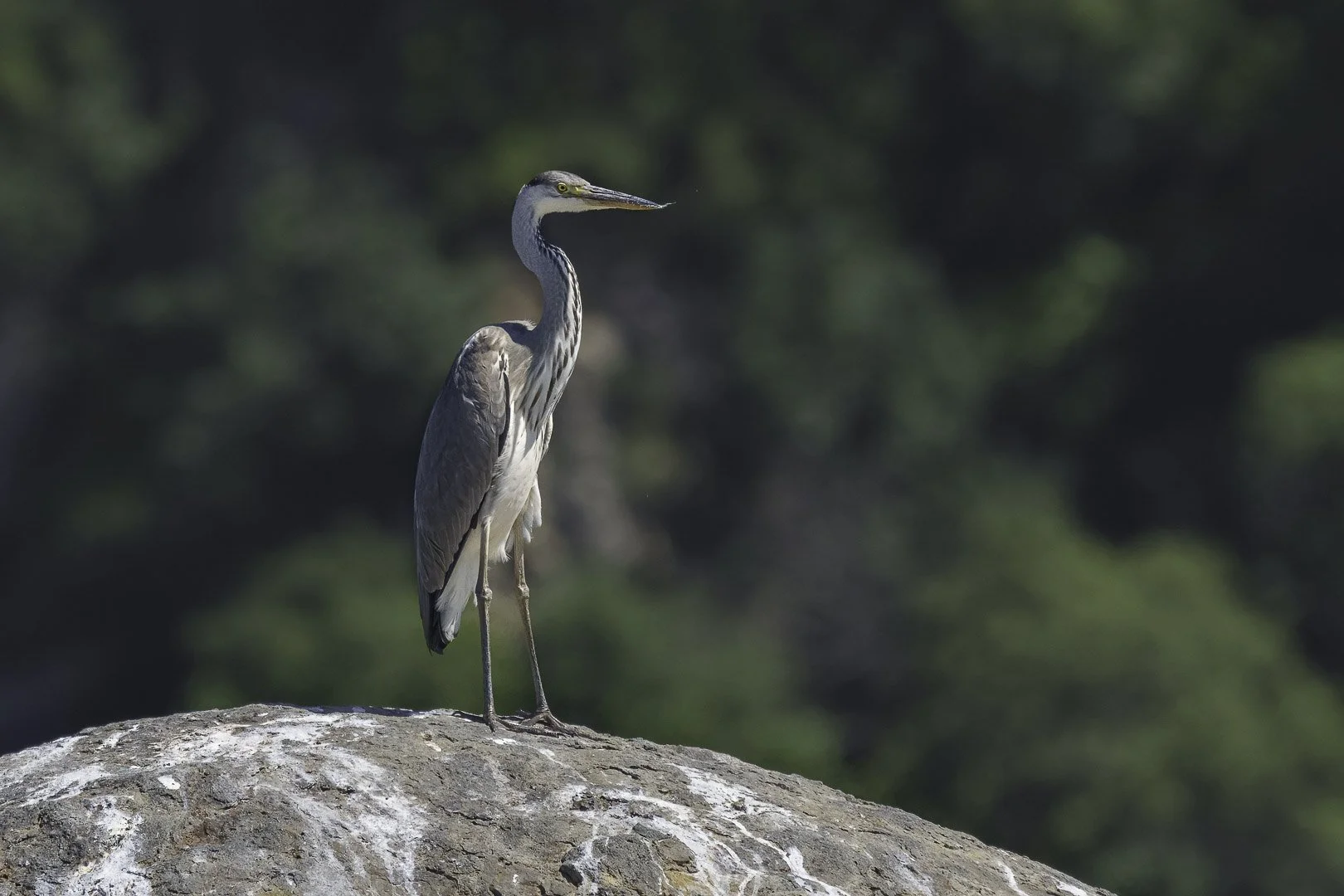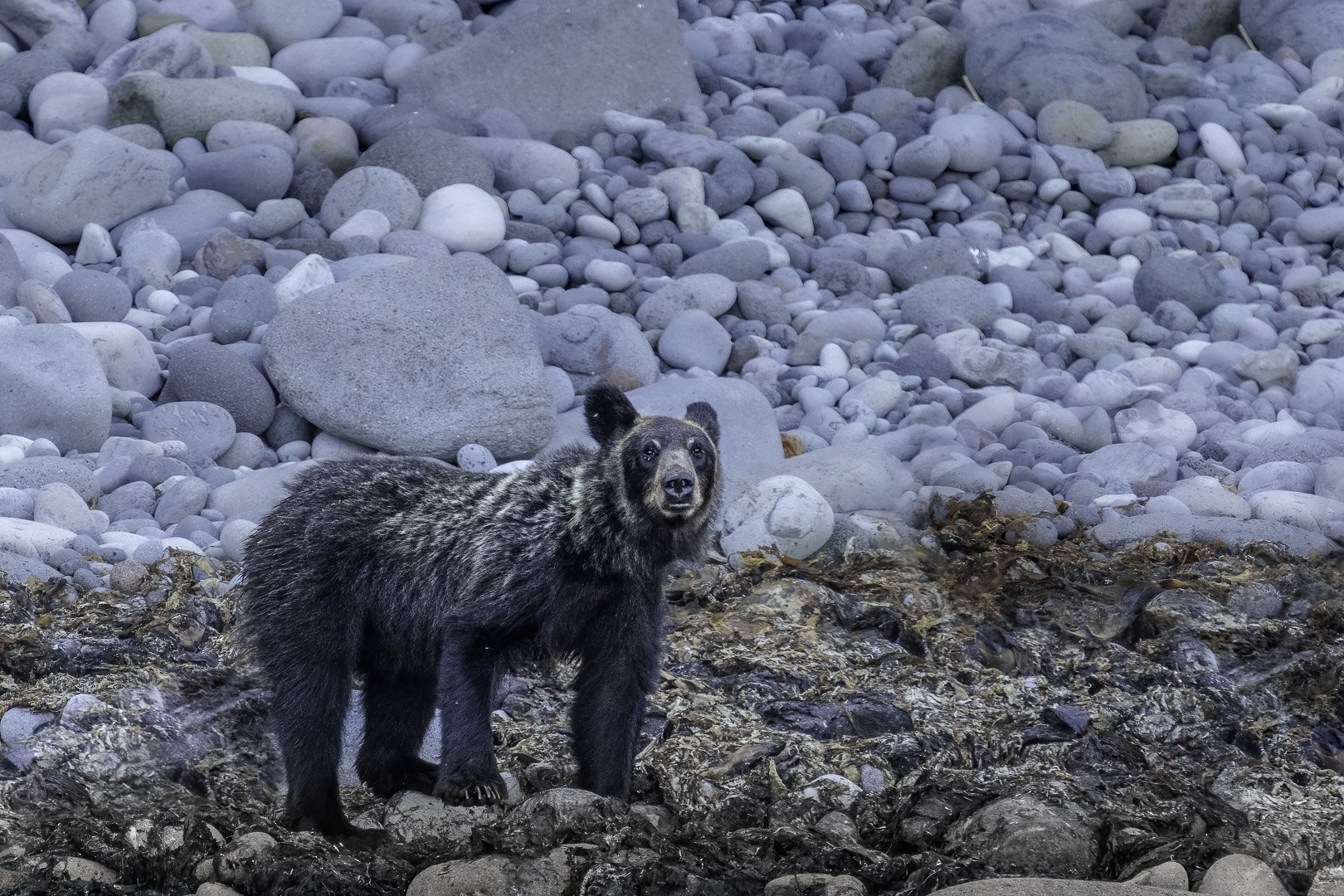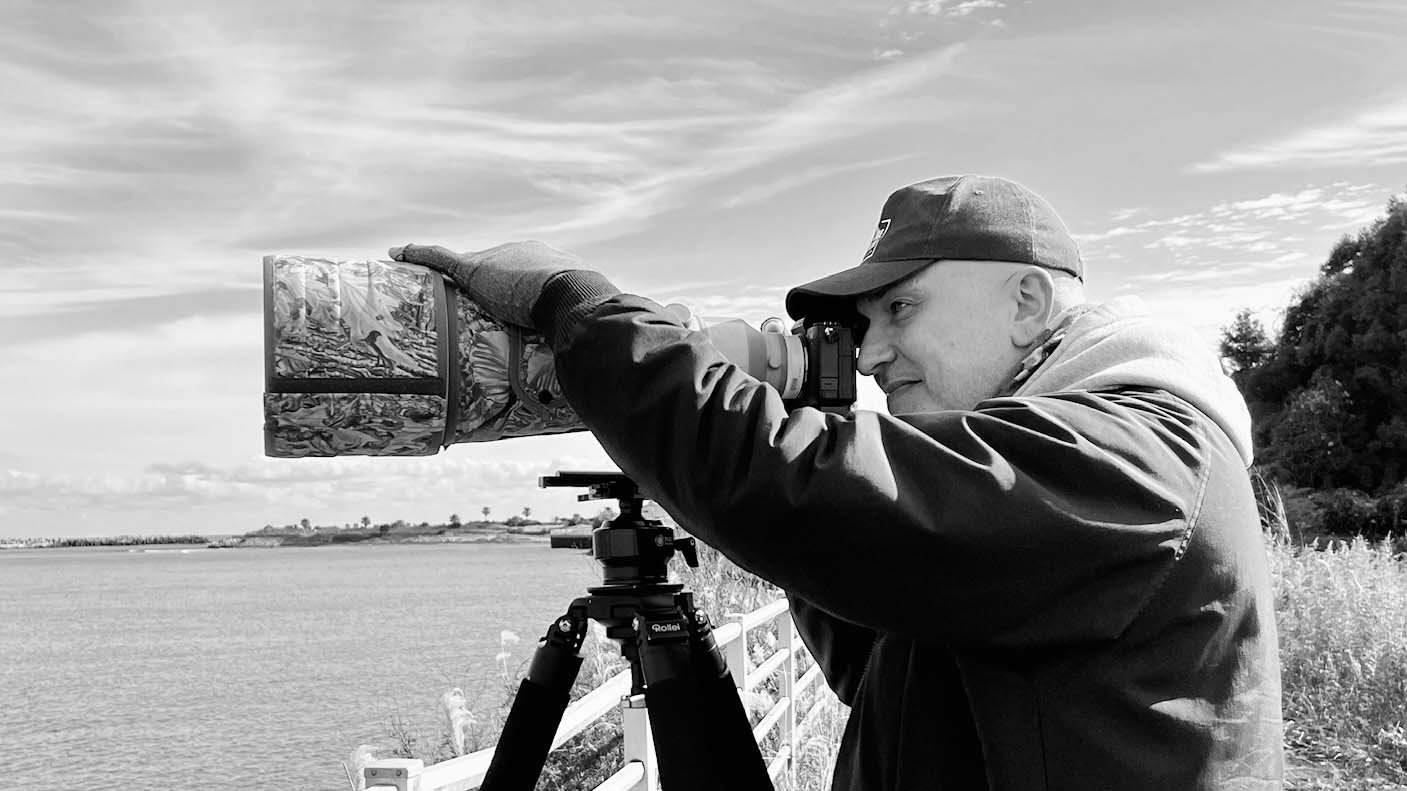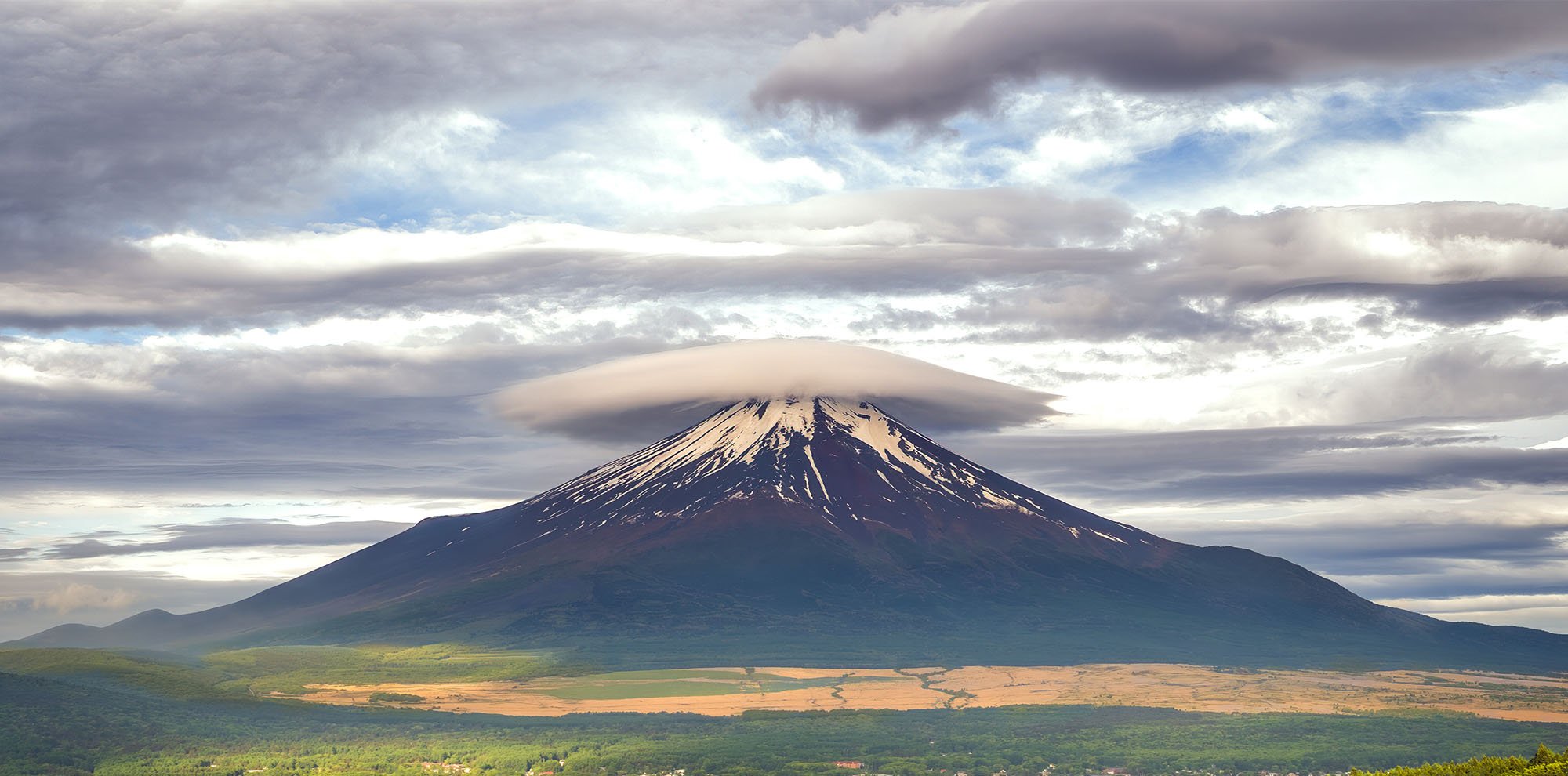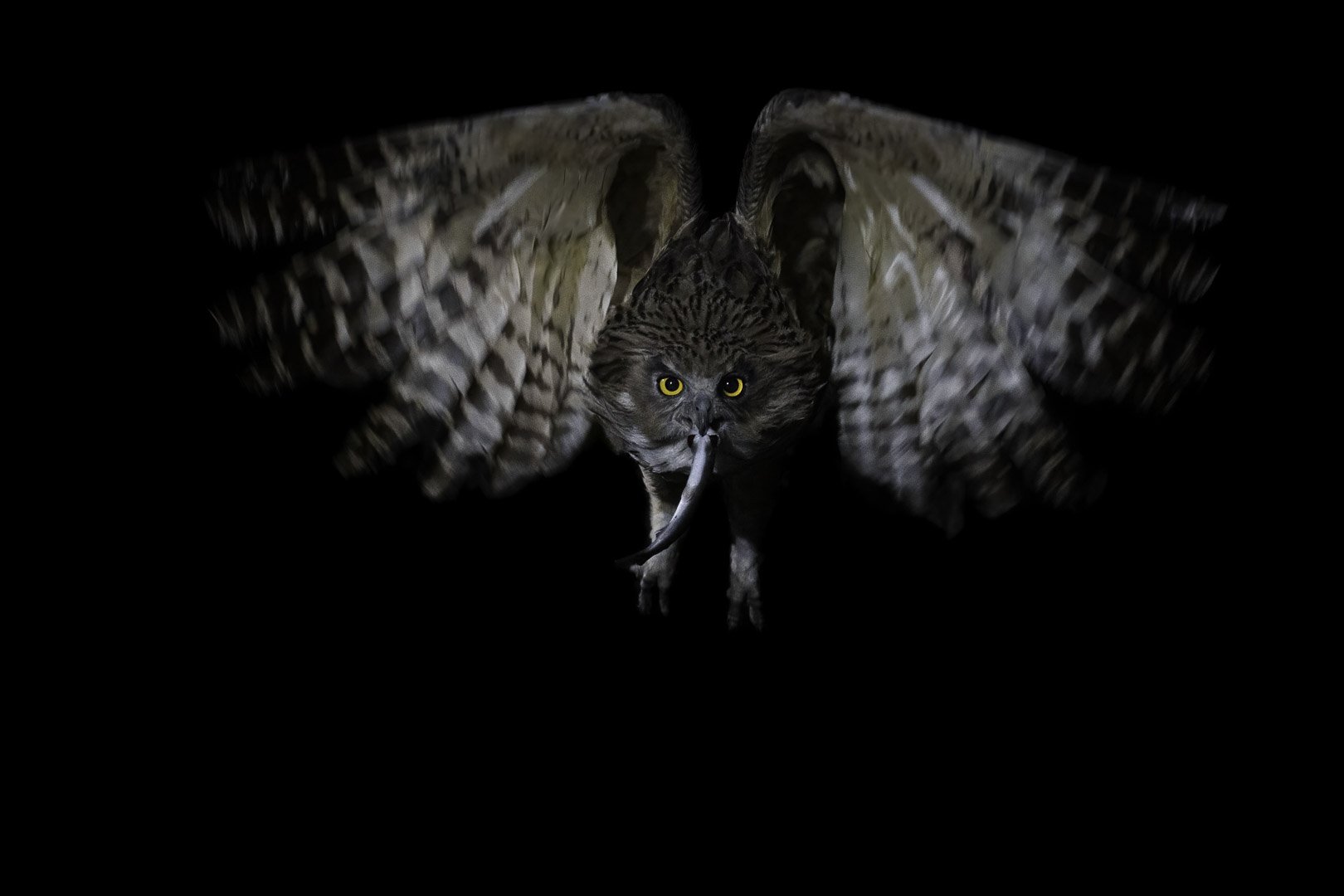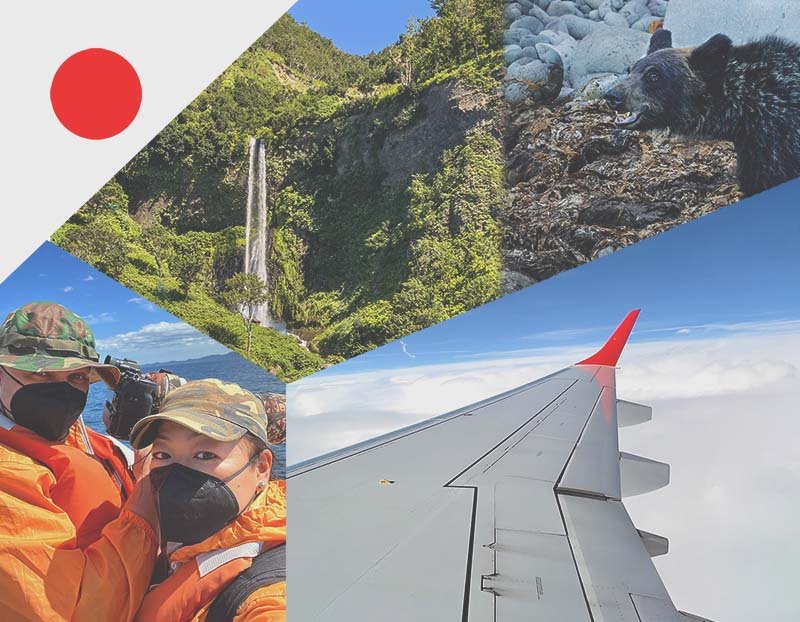The EZO Brown Bear of Hokkaido - #Part 3
EZO Brown Bear on a Rocky Beach in Hokkaido
In the third part of my Wild Japan travel report, I focus on the EZO Brown Bear and how best to photograph this apex predator on Hokkaido. Our plan was to capture this giant of the wilderness in photos during our trip.
We chose a special tour because the bears in Shiretoko can be found not only in the forests but also on the rocky beaches of the peninsula, observable from the water. For this reason, we opted for a boat tour that allowed us to get closer to the shore without disturbing the bears or putting ourselves in danger.
Bear Warning Sign in Shiretoko
Importance of Guided Tours
Why didn't we venture out on our own?
The Shiretoko National Park hosts the largest population of brown bears in Japan. Unlike the Bavarian Forest, where there's no danger from wildlife, the bears in Hokkaido roam freely, not confined to fenced reserves. Given the high density of bears, an encounter is likely. Most Europeans, including myself, might find such an encounter overwhelming due to lack of experience with bears. Therefore, it's crucial to participate in guided tours rather than exploring alone.
Bear-Watching Boat Tour in Rausu
Our Boat for the Bear Tour
We chose a provider in Rausu that offered a small boat tour. Fortunately, only my wife, another guest, and I booked the tour that day.
The tour followed the east coast of the national park to the northern tip and back. We observed an impressive coastal landscape, which at times felt like a southern island with turquoise waters, lush green meadows, forests, large waterfalls, and bird colonies.
Route of the Bear Tour along the Shiretoko Coast
- The map has been graphically adjusted. Screenshot from www.openstreetmap.org - Copyright and License
Disappointment set in after two hours of boating with no bear in sight. I thought to myself, “Well, that's nature for you, no guarantees like in a zoo.” The boat turned around, and we headed back to the home port.
The sea became rougher, and the small boat made large jumps over the waves in an irregular rhythm. Seawater splashed in high fountains into and over the boat. Suddenly, the captain slowed down and pointed to a small, shadowy beach.
On this beach, we spotted a young bear. The captain steered closer, about 50 meters from the shore. I immediately grabbed my cameras. The young bear was searching for food, lifting stones with its paw to check for crustaceans underneath. This was a demonstration of how powerful these animals are; the stones were large and heavy, ones I would need both hands and all my strength to lift.
A short clip filmed with an iPhone. This was taken while I was photographing the bear on the beach with a 400 mm lens from the boat. It might give you a better sense of the distance and conditions on site.
The light and especially the swaying of the boat due to the rough sea made photographing the bear challenging. I had equipped my two cameras with the Sony 100-400mm and the Sony 200-600mm lenses. I alternated between both setups, trying my best to compensate for the low light and the boat's movement. It was a challenging task that had to be completed quickly, as we only had 10 minutes before heading back.
The entire tour was a long ride but unfortunately only a short yet memorable encounter with the EZO Brown Bear. This encounter did not diminish our respect for these animals. One feels quite different when realizing they're not the strongest mammal in the area. 😜
However, this was not the only encounter with the brown giants during the trip.
EZO Brown Bear on Rocky Shore
Ezo Brown Bear Profile (Ursus arctos lasiotus)
Species: Subspecies of the brown bear
Size: Up to 200 cm
Weight: Up to 500 Kg
Habitat: Open areas, forests, coastal regions, wooded mountain areas
Distribution: Siberia/Russia, Northeast China, North Korea, Hokkaido/Japan
Diet: Omnivorous, primarily vegetarian
Why the Name EZO Brown Bear?
The EZO Brown Bear is a subspecies of the brown bear and is considered one of the largest types of brown bears. They can also be found in Siberia, Northeast China, North Korea, and Hokkaido. Why these bears are called EZO bears, I can only speculate. "EZO" refers to an ancient Japanese people who lived in northern Japan. The area of present-day Hokkaido was also once called EZO. Therefore, it is likely that this name originated specifically in Japan.
An Unexpected Encounter
As I mentioned earlier, the probability of encountering a bear in Shiretoko National Park is over 99%. And this is not just a saying. I can share an experience from my own trip.
The first bear that emerged from the bushes, in the car behind, the park rangers
There aren't many access roads you can drive on in the national park; one leads to a remote Ryokan (traditional Japanese inn) and another to a waterfall fed by a hot spring. We drove both roads in one day. We wanted to visit the hot spring waterfall and also check out the remote Ryokan. The latter route offered a diverse array of vegetation to admire during the drive. As we drove, I imagined all the places where I would like to photograph a bear. 😀
As we crossed a small bridge on our way back from the Ryokan, I saw a bear in the narrow creek below, surrounded by old trees and bushes. I braked sharply and reversed back onto the bridge. My first thought was to capture a photo of the bear. We were in the car, and the bridge provided a safe distance from the bear, minimizing any danger.
However, before I could take the photo, a park ranger's car appeared out of nowhere. 😀 We had noticed the car parked by the roadside on our way from the Ryokan. Two rangers were inside and asked politely if everything was alright. We confirmed and told them we had seen a bear and wanted to photograph it from the bridge. The rangers wished us good luck, advised caution, and drove off slowly.
By this time, the bear I had spotted was no longer at the same place. It had likely crossed the creek and suddenly appeared on the road ahead, emerging from the bushes growing along the roadside. The rangers followed the bear slowly in their car, ensuring it returned to the forest. Then, a second bear emerged from the same bushes and crossed the road in front of us.
Unfortunately, I couldn't get the photo I had hoped for. The only picture I managed was the one you see above, where the first bear emerged from the bushes and was slowly followed by the rangers' car.
The point I want to make is that, even though we weren't in danger, sitting in the car and not planning to leave it, the situation was as follows:
We saw a bear standing in a creek and focused on it.
We didn't notice or even think that another bear might be in a bush about 15 meters away from us.
Most Germans/Europeans can't properly assess such situations or know how to behave, as we no longer have such animals and situations in our natural areas. Therefore, one should first learn what to look out for.
At the Shiretoko National Park Nature Center, you can receive initial training on what to look out for and how to behave. I recommend anyone planning a hike through the national park to participate in this “briefing/training” on-site. It usually lasts about 30 minutes. Initially, you might feel a bit overly sensitive while walking through nature after learning what to expect and what to be cautious about.
You can also watch a film there titled "The Limit" which describes the situation between humans and bears in Shiretoko and the challenges posed by the high bear density in the national park. The film has English subtitles, and I highly recommend it. Unfortunately, I couldn't find this film on any streaming service, so you'll have to go to Shiretoko to see it. 😜
But here is a trailer for it:





